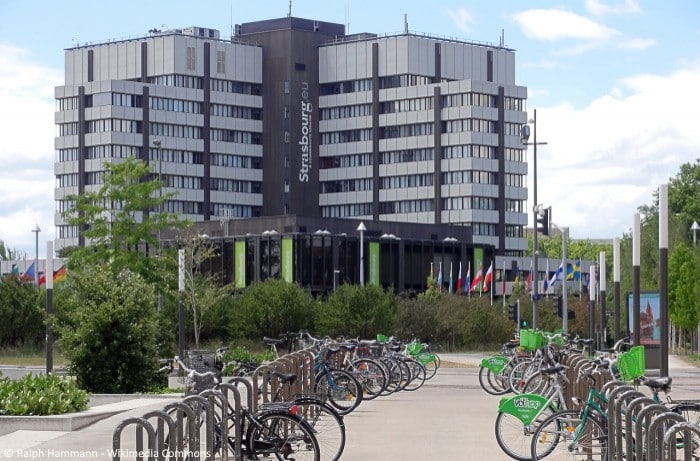The General Data Protection Regulation imposes strict requirements on the management of personal data. When it came into force, IT Departments went into project mode to ensure compliance with the requirements. But since then? The complexity of information systems, combined with the explosion in data volumes, makes it difficult to trace sensitive data, which is often scattered accross multiple platforms and applications.
Non-compliance with the GDPR not only exposes companies to severe penalties, but also threatens their reputation. Good data protection has become the norm for customers and partners. The time for implementation has passed, and GDPR compliance must now be guaranteed over the long term and each time the IS changes. IT Departments have little choice but to equip themselves with robust tools for mapping, monitoring and securing all personal data flows. This is where IS mapping solutions come into their own.
By making it possible to visualise data flows and identify vulnerable points, these solutions help IT Departments to ensure proactive management of GDPR compliance. The most advanced IT Departments are able to approach audits with confidence and collaborate easily with business and legal managers. In this article, you’ll find out how you can use mapping to stay GDPR compliant.
Understanding the GDPR requirements for information systems
IT Departments are the first to have taken up the challenges posed by the GDPR. They know that the protection of personal data, imposed by this regulation, is at the heart of their responsibilities. However, even with this awareness, some crucial challenges remain, especially with the rapid evolution of technological environments. Understanding these challenges is essential to ensuring ongoing compliance and avoiding sanctions.
Managing personal data in increasingly complex IS environments
Information systems have become complex ecosystems, where data no longer resides solely in internal databases. Today, it circulates through multi-cloud environments, SaaS applications, internal servers and external partners. This diversity of environments makes it difficult to trace and protect personal data.
CIOs are managing distributed environments where data flows are multiple, scattered and sometimes beyond their direct control. An information systems mapping solution centralises visibility of these flows, ensuring accurate tracking of personal data from the point of collection to its final processing. This becomes an essential element in guaranteeing real-time traceability of sensitive data.
Regulators’ priorities in terms of GDPR compliance
While CIOs are well aware of the financial penalties of the GDPR , regulators are placing increasing emphasis on transparency and the ability of companies to anticipate the risks associated with personal data. The GDPR is not just about reacting to security incidents after the event; it demands proactive and rigorous management.
IS mapping solutions enable CIOs to be proactive when it comes to compliance. They offer tools for automatically auditing and documenting each data processing operation, ensuring total transparency during controls or audits. What’s more, they enable risk areas to be identified even before an incident occurs, limiting the potential for exposure to sanctions and loss of reputation.
The challenges of comprehensive data mapping in an IS
In an increasingly fragmented and complex ‘digital space’, where data circulates between different platforms, databases and applications, the complete mapping of information systems is becoming an imperative for Information Systems Departments. The ability to visualise and trace all data flows plays a key role in securing personal data and complying with the GDPR . Here are the main issues linked to this complete mapping.
Why is accurate mapping crucial to GDPR compliance?
We need to ensure that every piece of personal data is identified, tracked and secured across all the company’s systems. A complete IS map makes it possible to locate every flow of personal data, from collection to deletion. This not only helps to maintain real-time visibility, but also to meet the transparency requirements imposed by the GDPR .
Inaccurate or incomplete mapping can lead to regulatory breaches and significant risks for the business. A well-mapped IS enables IT Departments to anticipate and resolve compliance issues quickly, while providing a clear view of where sensitive data is stored.
Detect data silos and potential vulnerabilities
In many organisations, information systems are fragmented, with data silos spread across different departments or applications. These silos create areas of vulnerability where data can be poorly managed or inadequately protected. A comprehensive mapping solution helps to break down these silos, providing an overview of all data flows and quickly identifying potential vulnerabilities.
In addition, a mapping solution can detect redundancies and inconsistencies in data management, improving the efficiency of processes while reducing the risk of security breaches. The ability to unify data management in a fragmented IS is one of the most valuable benefits for IT Departments.
How does an IS mapping solution meet the challenges of the GDPR ?
Visualising personal data flows in real time
One of the main requirements of the GDPR is to know where and how personal data is collected, stored and processed. An IS mapping solution provides a clear view of data flows across all the applications, databases and systems used in the company. This overview enables IT Departments to pinpoint critical points, where sensitive data is handled, and to identify potential risks.
By having a dynamic map that is updated in real time, companies can not only react quickly in the event of an incident, but also anticipate compliance problems before they arise. This offers total transparency on the circulation of personal data and enables the actions taken to comply with the GDPR to be documented, a key element during compliance audits.
Automating GDPR auditing and documentation
One of the biggest challenges of the GDPR is documenting the processing of personal data. Keeping this documentation up to date can quickly become a cumbersome and tedious task. IS mapping solutions can automate a large part of this process. Thanks to a complete and accurate mapping of data flows, they can automatically generate audit reports showing how data is processed and protected in each part of the information system.
This not only facilitates internal controls, but also the response to external audits by regulatory authorities. In the event of an incident or questions about compliance, an IT department equipped with an IS mapping solution can quickly provide evidence of compliance and of the actions taken to protect personal data.
The long-term benefits of an GDPR -compliant IT mapping solution
Adopting an GDPR -compliant information systems mapping solution does more than just meet legal obligations. It represents a strategic investment with long-term benefits, both in terms of data management and organisational efficiency. Let’s take a look at how such a solution can transform the way an IT department manages its data, while ensuring ongoing compliance with the GDPR .
Reducing the risk of non-compliance and proactively managing data
An GDPR -compliant IT mapping solution can quickly identify and resolve compliance risks before they become critical issues. By providing a comprehensive and accurate view of data flows, these tools enable CIOs to constantly monitor areas at risk and implement corrective measures in real time. This significantly reduces the risk of fines and penalties for non-compliance with GDPR requirements.
In the long term, such a solution helps to move from a reactive approach to proactive data management. By anticipating regulatory changes and adapting quickly to new requirements, CIOs can avoid costly crises, improve data security and strengthen the resilience of their IS.
Improved transparency and cross-departmental collaboration
Another key benefit of an IS mapping solution is improved transparency within the organisation. Mapping makes data flows visible to all the teams involved – IT, legal, compliance and senior management. This shared visibility facilitates the cross-departmental collaboration needed to meet the requirements of the GDPR and implement effective data governance.
By making data management more transparent and fluid, these solutions also improve communication between teams, resulting in faster, more informed decision-making. It also helps to avoid redundancies and optimise resource allocation.
Conclusion
Adopt an IS mapping solution to ensure sustainable GDPR compliance
The GDPR places increasing responsibility on IT Departments to manage personal data. In addition to legal compliance, this is a strategic challenge in terms of ensuring data security, boosting stakeholder confidence and avoiding penalties that could have a serious impact on a company’s reputation and finances. An information systems mapping solution is an essential asset for meeting these challenges.
With complete visibility of data flows, automated process documentation and proactive risk management, a mapping solution enables IT Departments to anticipate incidents and maintain ongoing GDPR compliance. It also fosters collaboration between the company’s different teams, improving transparency and overall efficiency.
By investing in an IS mapping solution, businesses are not just complying with regulatory requirements. They optimise their data governance and build an infrastructure that is more agile and resilient in the face of regulatory and technological change.


